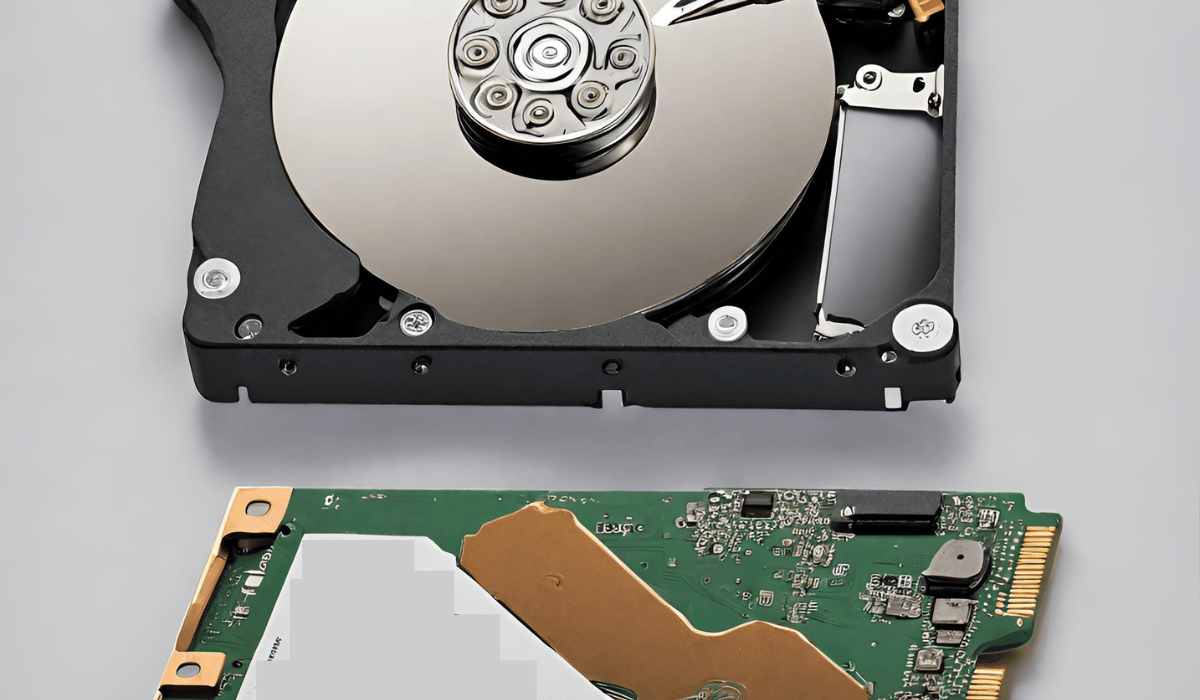Importance of Securely Deleting Data From Hard Drives

Securely deleting data from hard drives is a crucial step in protecting sensitive information from falling into the wrong hands. When data is deleted from a hard drive, it is not erased, but rather marked as available space for new data to be written over it. This means that the deleted data can still be recovered using specialized software or techniques. However, if sensitive information such as personal or financial data, trade secrets, or classified information falls into the wrong hands, it can lead to serious consequences.
Main Techniques for Securely Deleting Data
There are several techniques for securely deleting data from a hard drive:
1. Overwriting: This involves writing random data over the existing data on the hard drive multiple times until it is no longer recoverable.
2. Degaussing: This technique uses a powerful magnet to erase the data on the hard drive.
3. Physical destruction: This involves physically damaging the hard drive beyond repair, such as by drilling holes in it or shredding it.
Understanding Hard Drive Storage
These are indeed some of the most commonly used techniques for securely deleting data from a hard drive. It’s important to note that the level of security required for data deletion will vary based on the sensitivity of the data being stored. For example, a hard drive containing highly classified information may require more extensive measures than a hard drive containing non-sensitive personal data.
How Hard Drives Store Data?
Hard drives store data using magnetic fields on spinning disks. The disks are coated with a magnetic material and a read/write head accesses the data by changing the magnetic orientation of tiny regions on the disk. These regions, called bits, represent the 1s and 0s of binary code that make up all digital data. The data is organized into sectors and tracks on the disk to allow for efficient storage and retrieval.
Differences Between Solid-State And Mechanical Hard Drives

Solid-state drives (SSDs) use flash memory to store data instead of spinning disks. This makes them faster and more reliable than mechanical hard drives. SSDs have no moving parts, so they are less prone to physical damage and can access data much faster than mechanical hard drives. However, SSDs are typically more expensive than mechanical hard drives and have a limited lifespan due to the finite number of write cycles that flash memory can endure.
How Data is Retrieved From Hard Drives?
Data is retrieved from hard drives using magnetic storage technology. Inside a hard drive, there is a spinning disk coated with a magnetic material. Data is stored on the disk in the form of magnetic fields, which can be read and written by a read/write head that moves across the disk’s surface. When a computer needs to access data from the hard drive, the read/write head moves to the appropriate location on the disk and reads the magnetic fields to retrieve the data.
Risks of Leaving Data on Hard Drives
Leaving data on hard drives can pose several risks, especially if the hard drive is no longer in use or is being disposed of. One risk is the potential for the data to be accessed by unauthorized individuals, such as hackers or identity thieves. This can lead to sensitive information being exposed, such as personal or financial data. Another risk is the potential for the data to be recovered even after it has been deleted.
Techniques for Securely Deleting Data

To securely delete data from a hard drive, several techniques can be used. One common method is to use a data-wiping program or software that overwrites the data multiple times, making it much harder to recover. Another method is to physically destroy the hard drive, such as by drilling holes in it or using a shredder. It is important to note that simply deleting files or formatting the hard drive is not enough to securely erase the data.
Software-Based Techniques for Securely Deleting Data
Several software-based techniques can be used to securely delete data from a hard drive. One popular method is to use a data-wiping program, such as DBAN (Darik’s Boot and Nuke), which overwrites the data on the hard drive multiple times with random data. This makes it much harder for anyone to recover the original data.
Physical Techniques for Securely Deleting Data
In addition to software-based techniques, there are also physical techniques that can be used to securely delete data from a hard drive. One such method is to physically destroy the hard drive, either by shredding it or drilling holes through it. Another method is to use a degausser, which uses a powerful magnetic field to erase the data on the hard drive.
Best Practices for Securely Deleting Data
Here are some best practices for securely deleting data:
1. Use a reputable software-based data wiping tool to overwrite the data on the hard drive multiple times.
2. Make sure to wipe all areas of the hard drive, including hidden partitions and swap files.
3. If possible, encrypt the data on the hard drive before wiping it to add an extra layer of security.
4. Consider using physical techniques such as shredding or degaussing for highly sensitive data.
Importance of Backup Before Deleting Data
Backing up your data before deleting it is crucial to ensure that you have a copy of important information in case something goes wrong during the deletion process. It is also important to have a backup in case you need to retrieve the data at a later time. Backing up your data can be done in several ways, including using an external hard drive, cloud storage, or a backup service. It is important to make sure that the backup is stored securely and that you have access to it when needed.
Data Recovery Techniques
Data recovery techniques are used to retrieve lost or inaccessible data from various storage devices such as hard drives, USB drives, and memory cards. These techniques involve the use of specialized software or hardware tools to recover the data. One common data recovery technique is file recovery, which involves searching for and recovering individual files that have been accidentally deleted or lost due to a system crash. This technique can be done using specialized software that scans the storage device for deleted or lost files and attempts to recover them.
Risks Associated With Data Recovery
While data recovery can be a useful tool for retrieving lost or deleted files, there are also risks associated with the process. One risk is that the recovery process may overwrite or damage the data that is being recovered, making it impossible to recover the data in its original form. Another risk is that the recovery process may fail, resulting in permanent loss of the data. Additionally, if the data being recovered contains sensitive or confidential information, there is a risk that the information could be compromised during the recovery process.
Regulations Governing Data Destruction
There are various regulations governing data destruction, depending on the industry and location. For example, the Health Insurance Portability and Accountability Act (HIPAA) in the United States requires healthcare organizations to implement policies and procedures for the secure destruction of electronic protected health information (ePHI). Similarly, the General Data Protection Regulation (GDPR) in the European Union requires organizations to ensure the secure and permanent erasure of personal data.
Conclusion
In conclusion, organizations need to be aware of the regulations governing data destruction in their industry and location. Failure to comply with these regulations can result in legal and financial consequences. Therefore, it is crucial to implement proper policies and procedures for the secure destruction of sensitive data, such as ePHI and personal data, to ensure compliance and protect against data breaches.
FAQs
What is the best way to securely delete data from a hard drive?
There are several ways to securely delete data from a hard drive, including using data-wiping software, physically destroying the hard drive, or using a professional data destruction service. It is important to choose a method that is appropriate for the sensitivity of the data and complies with any applicable regulations.
Can data be recovered after it has been securely deleted?
In general, data that has been securely deleted cannot be recovered. However, it is important to note that some advanced data recovery methods may be able to retrieve data that has been overwritten or damaged but not destroyed. Therefore, it is important to use a reliable and effective method of secure data deletion to ensure that sensitive information cannot be accessed by unauthorized individuals.
What are the risks associated with data recovery?
The risks associated with data recovery depend on the situation and the type of data being recovered. In some cases, data recovery can be a useful tool for restoring lost or deleted files. However, in other cases, data recovery can pose a risk to privacy and security. For example, if a device containing sensitive information is recovered by an unauthorized individual, they may be able to access and misuse that information.
What regulations govern data destruction?
Several regulations govern data destruction, depending on the type of data and the industry in which it is used. Some common regulations include the General Data Protection Regulation (GDPR) in the European Union, the Health Insurance Portability and Accountability Act (HIPAA) in the United States, and the Payment Card Industry Data Security Standard (PCI DSS) for credit card data. These regulations outline specific requirements for how data must be securely destroyed to prevent unauthorized access or misuse.
What are the penalties for non-compliance with data destruction regulations?
The penalties for non-compliance with data destruction regulations can vary depending on the specific regulation and the severity of the violation. In general, penalties can include fines, legal action, and damage to a company’s reputation. For example, under the GDPR, fines can be up to 4% of a company’s global revenue or €20 million, whichever is greater. HIPAA violations can result in fines ranging from $100 to $50,000 per violation, up to a maximum of $1.
